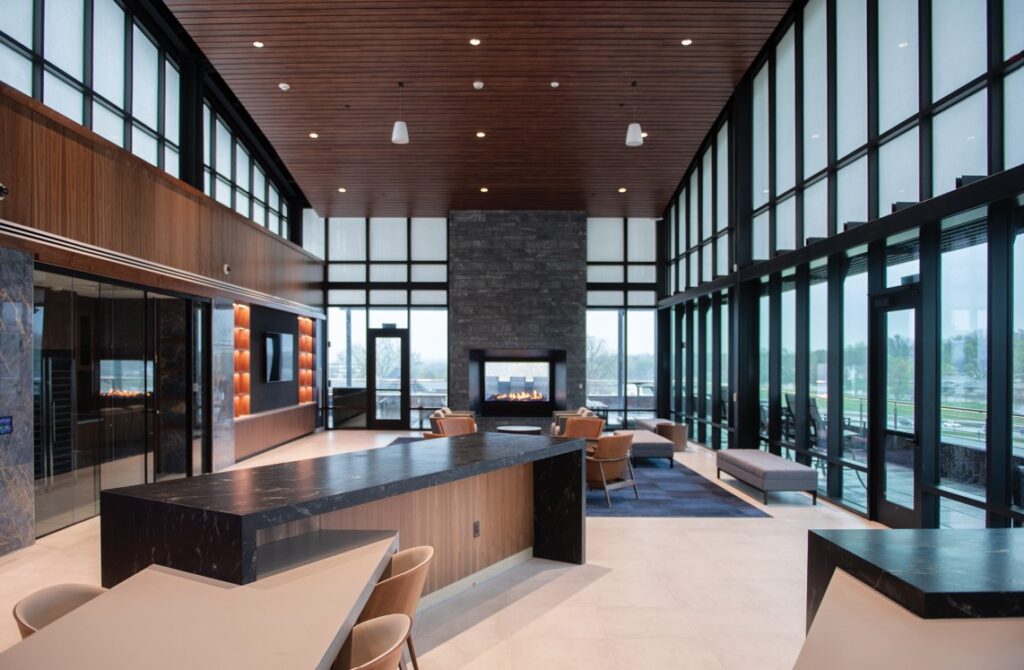Hubbell agrees to sell former Riverfront Y site to federal government for new courthouse

KENT DARR Aug 27, 2018 | 5:37 pm
3 min read time
723 wordsAll Latest News, Government Policy and Law, Real Estate and DevelopmentHubbell Realty Co., facing the likelihood that it would lose a prime piece of downtown development ground to eminent domain, has agreed to sell the site of the former Riverfront YMCA to the federal government for construction of a $140 million federal courthouse.
A purchase agreement was reached in the last 12 to 24 hours, a Hubbell spokesperson said. The price was not released.
The U.S. General Services Administration has twice stated its preference to build the courthouse on the site at 101 Locust St., land that overlooks the Des Moines River where private development was viewed as a key to connecting many pieces of downtown and providing an overlook on a multi-million-dollar water trails project that is considered a fundamental piece of helping local employers attract future workers.
Hubbell President and CEO Rick Tollakson has led efforts and received honors for his advocacy of the water trails project. In recent weeks, Hubbell had released plans for a luxury condominium project at the site that could have generated several million dollars a year in property tax revenue for a city that is in need of additional revenue. As a government building the federal courthouse will not generate property tax revenue.
Tollakson and Hubbell board Chairman Jim Hubbell said in recent weeks they would do everything possible to keep the property, at the same time acknowledging that there was little to stop the federal government from acquiring the land through eminent domain.
Tollakson had complained that even as the GSA was dropping a red pin on the downtown Des Moines development map at the Riverfront Y site it was not making him any offers.
He was said to be in no mood this morning to continue talking about battle with the GSA, saying recently he wished the agency “would just go away.
Hubbell released this statement from Tollakson: “Hubbell has entered into a purchase agreement with the GSA under the threat of eminent domain. While we are disappointed that we cannot proceed with our proposed condominium development at the Riverfront site, it became very clear that this was the best path forward in order for our company to continue our work on other downtown developments.”
The GSA had this to say: “GSA is currently in discussions with the property owner to reach a mutually agreeable purchase price. We cannot comment further, as this project is an active acquisition.”
Hubbell bought the property, once among the holdings of company patriarch F.M. Hubbell, in October 2016 from the YMCA of Greater Des Moines for $4.77 million. It later entered an agreement with the city of Des Moines to sell the land for $5.2 million if Hubbell did not provide a development proposal by the end of this month.
On Aug. 6, Hubbell released plans for a $75 million condominium project, with units selling in a range of $500,000 to $1.5 million. On Aug. 7, the GSA released a report saying the 2-acre property was where it wanted to build a new federal courthouse. It was the second time the agency selected site, with the first time leading to the agreement between Hubbell and the city, an effort to convince the GSA to look for other sites.
It had been hoped that a federal courthouse would trigger additional economic development, especially in a 12-acre area of public and private property in the city’s Market District. However, the GSA rejected two sites in the area, including one that has been promoted by the city for more than a decade.
Few downtown observers sees a new federal courthouse as being a transformative project for the west side of the Des Moines.
However, Des Moines Deputy City Manager Matt Anderson has said that the GSA “seems committed to addressing our concerns to the extent their budget and space constraints will allow.” Today, he repeated those comments. Read more on the topic of the city’s concerns and GSA’s efforts to address them in this Business Record Insider article.
Meanwhile, Hubbell has plenty to keep it busy, with two transformative projects in various stages of development: The Bridge District neighborhood that is a mix of apartment buildings and high-end for-sale townhomes and Gray’s Station, a 70-acre area south of Martin Luther King Jr. Parkway that could provide a range of housing in a master planned neighborhood with a potential population of 2,000.







